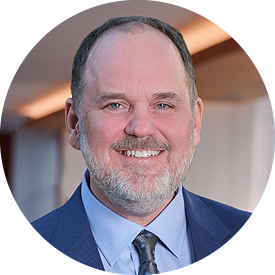Gallstones and kidney stones form in different organs in the body, but they can be similar in many ways. For example, both kidney stones and gallstones can form and exist in the body without causing any symptoms. They may not require any treatment unless they get big enough to block the flow of fluids in their respective organs and systems.
This blog discusses the differences and similarities between kidney stones and gallstones.
Key Points:
- Gallstones and kidney stones occur in different organs and systems in the body.
- The risk factors for gallstones and kidney stones are similar.
- Gallstones and kidney stones may have a bidirectional association.
What is the Difference Between Kidney Stones and Gallstones?
Kidney stones and gallstones are very different, but they may be similar in some ways. They have different causes, symptoms, methods of diagnosis, and treatments.
The gallbladder is part of the digestive system. It stores bile, which the digestive system uses to break down fats. Gallstones develop in the digestive tract and may block the gallbladder or bile ducts. They may be the size of a grain of sand or maybe the size of a golf ball.
The kidneys are part of the urinary system that filters the body’s blood, removing waste and performing other essential functions. Kidney stones develop in the urinary tract and may block the flow of urine in the ureter. Kidney stones may be the size of a grain of sand, or they may grow to a size several inches in diameter.
Kidney stones
Kidney stones are typically formed by high levels of certain chemicals in the urine. When there is too much waste or too little liquid in the urine, chemicals can clump together, forming crystals of various sizes. Unless the kidneys flush out the crystals, they can bond with other chemicals and elements, creating hard kidney stones.
There are four different types of kidney stones:
- Cystine stones: These stones are caused by cystinuria, a rare condition. Cystinuria is a genetic condition that causes cystine (a natural chemical) to leak into the urine. When there is too much cystine present in the urine, kidney stones may form. This is a lifelong condition that has no cure but can be effectively treated.
- Uric acid stones: These are a common type of kidney stone. High levels of purine (a natural chemical in shellfish and some meats) can cause high levels of urate. High levels of urate create kidney stones. Uric acid kidney stones may run in families.
- Calcium oxalate stones: These are the most common type of kidney stones. They form when calcium and oxalate (a natural chemical found in most food) mix in the urine. These kidney stones form when there is not enough calcium or fluids.
- Struvite stones: These kidney stones are less common. They occur when bacteria from urinary tract infections (UTIs) get into the urinary tract.
Causes
Anyone can develop a kidney stone; however, some people are at an increased risk of getting a kidney stone if they:
- Have a family history of kidney stones
- Have health conditions that affect the concentrations of cystine, oxalate, uric acid, or calcium in their urine
- Have a low intake of water or produce low urine volumes
- Have diets that are high in salt, sugar, oxalates, and animal proteins
- Have polycystic kidney disease
- Take certain medications, such as calcium-based antacids or diuretics
Symptoms
Small kidney stones may travel through the urinary tract out of the body without the person even knowing. Some people may not have any symptoms. Larger kidney stones may get stuck in or block the urinary tract, preventing urine from passing through. Symptoms of kidney stones may include:
- Fever and chills
- Severe lower back pain
- Blood in urine
- Nausea and vomiting
- Lower abdominal or side pain
- Urine that looks cloudy or smells bad
There may be severe pain if a large kidney stone blocks the flow of urine when the body is trying to pass the stone.
Diagnosis
Diagnosis of a kidney stone typically begins with a medical history, physical examination, and imaging tests. Your physician will order imaging tests to determine the size and shape of the kidney stone. Once your physician has this information, they will decide how best to treat the stone. When deciding on treatment, your kidneys’ health and the kidney stone’s size and location need to be considered.
Once diagnosed, the cause of the kidney stone will need to be determined.
Treatment
Treatment options for kidney stones depend on the type, size and if the stone is blocking the urinary tract or causing pain. If the kidney stone is small, pain medication and lots of fluids may be prescribed by your doctor to help push the stone through the urinary tract and out of the body via the urine.
If the kidney stone is larger and blocking the urinary tract, other treatment options may be required, such as:
- Ureteroscopy. During this treatment, a doctor will insert a long tube-like tool into the ureter to remove the stone or use a laser to break the stone into smaller pieces.
- Lithotripsy. This treatment uses shock waves to break up the kidney stone into smaller pieces. The small pieces can then pass through the urinary tract and out through the urine.
- Surgery. In rare cases, surgery may be needed to remove the kidney stone. The doctor inserts a tube into the kidney to remove the stone.
Gallstones
Gallstones form when bile stored in the gallbladder hardens into a stone-like material. They are typically made of bilirubin, bile salts, or cholesterol. If they block the bile ducts, sudden pain may result. If gallstones are left untreated, they may cause complications.
Those with an increased risk of developing gallstones include:
- Adults over the age of 40
- Women
- People who are overweight
- People who are on cholesterol-lowering medications
- People who have lost a lot of weight in a very short period of time
Causes
The most common causes of gallstones include:
- Excessive amounts of bilirubin in bile
- Abnormal gallbladder emptying
- Excessive amounts of cholesterol in bile
It is not yet fully understood why the changes in bile occur. Some gallstones may form if their gallbladder does not empty often enough or entirely.
Symptoms
Most gallstones may not cause any symptoms. When they become larger and obstruct the bile ducts, symptoms begin to occur. Symptoms of gallstones are also called “attacks.” Each person may experience symptoms differently. Common symptoms of gallstones may include:
- Vomiting
- Nausea
- Pain in the right shoulder
- Pain between the shoulder blades
- Acute (sudden) pain in the upper right portion of the stomach
- Acute (sudden) pain in the center of the stomach
- Fever and chills
- Jaundice (a yellowing of the eyes or skin)
- Indigestion
- Abdominal bloating
Diagnosis
Diagnosis of a gallstone typically begins with a medical history, physical examination, and imaging tests. During testing for another diagnosis, asymptomatic gallstones may be discovered by accident. Commonly, gallstones are diagnosed by:
- Ultrasound
- Blood tests
- Cholecystology
- Endoscopic retrograde cholangiopancreatography (ERCP)
- CT scan
- Sphincterotomy
Treatment
If you have been diagnosed with gallstones but do not have any symptoms, treatment may not be needed. If a gallbladder attack or other symptoms occur, treatment may be required. A physician may refer you to a gastroenterologist or surgeon for treatment, depending on the severity of your condition.
Treatment options for gallstones depend on the size, type of stone, and cause of the stone. Possible treatment options may include:
- Surgical treatments: gallbladder removal surgery, which is called a cholecystectomy. There are two types of cholecystectomy: open and laparoscopic cholecystectomy.
- Nonsurgical treatments: medications to dissolve gallstones, shock wave lithotripsy to break up the gallstones, or ERCP.
Can Gallstones Affect Kidney Function?
While research is limited, a study revealed a bidirectional association between kidney stones and gallstones. Kidney stones increase the risk of gallstones, and gallstones increase the risk of kidney stones. This association could be explained by shared risk factors for developing gallstones and kidney stones, such as being overweight, eating a diet high in salt, fats, and sugar, and other conditions such as diabetes and high blood pressure. Thus, gallstones may not directly affect kidney function.
Panoramic Health
Panoramic Health is a physician-led, value-based care platform that prioritizes healthy patients. Our integrated value-based care platform allows us to care for our patients holistically, keeping them healthier longer.














